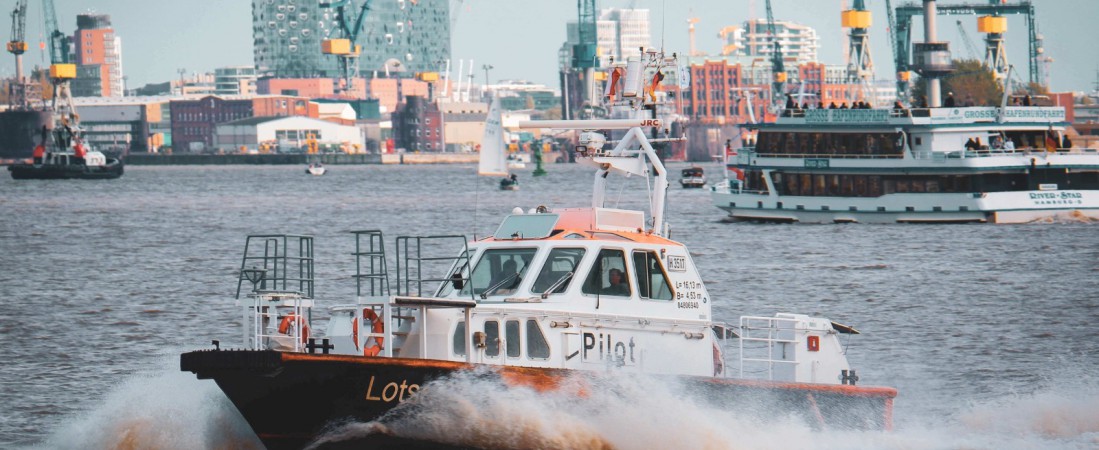
Pilot boats play a vital role in ensuring the safety and efficiency of maritime transportation. These boats are designed to transport pilots to and from ships that require their expertise in navigating through ports and other restricted waters. In this article, we'll take a closer look at pilot boats and their importance in the maritime industry.
What is a Pilot Boat?
A pilot boat, also known as a pilot cutter, is a type of vessel that is used to transport pilots to and from ships that require their services. These boats are typically smaller than the ships they serve and are designed for speed, maneuverability, and safety. They are often equipped with powerful engines and advanced navigation systems to enable them to reach the ships they are serving quickly and safely, even in adverse weather conditions.
The Importance of Pilot Boats
Pilot boats play a crucial role in the maritime industry, particularly in ports and other areas with restricted waters. Ships navigating through these areas often require the expertise of a local pilot who knows the waters, currents, and potential hazards. Pilot boats transport these pilots to and from the ships, enabling them to provide guidance and support to the ship's crew.
Pilot boats are also responsible for ensuring the safety of both the pilots and the ships they serve. They must be able to maneuver quickly and safely in all types of weather conditions to reach the ships they are serving. They are also equipped with advanced communication systems to ensure that they can stay in contact with the ships and other boats in the area.
Design and Features of Pilot Boats
Pilot boats are typically designed for speed and maneuverability. They are often equipped with powerful engines that enable them to reach speeds of up to 25 knots. They are also designed to be highly maneuverable, with features such as deep V-shaped hulls, sharp bows, and multiple engines to enable them to make quick turns and avoid obstacles.
Pilot boats are also equipped with advanced navigation systems to ensure that they can reach their destination quickly and safely. These systems include GPS, radar, and electronic charting systems that enable the boats to navigate through even the most complex waters.
Safety is also a top priority for pilot boats. They are equipped with advanced safety equipment such as life rafts, life jackets, and firefighting equipment to ensure that they can respond quickly to any emergency situations that may arise.
Conclusion
Pilot boats are a crucial component of the maritime industry, providing essential support and guidance to ships navigating through ports and other restricted waters. These boats are designed for speed, maneuverability, and safety, with advanced navigation systems and safety equipment to ensure that they can reach their destination quickly and safely. With their expertise and advanced technology, pilot boats help to ensure the safety and efficiency of maritime transportation.
The Future of Pilot Boats
As the maritime industry continues to evolve, pilot boats are also evolving to meet the changing needs of the industry. One significant trend is the use of automation and remote technology to increase the efficiency and safety of pilot boats.
One example of this trend is the development of autonomous pilot boats. These boats use advanced navigation systems and sensors to navigate through ports and other restricted waters without the need for a human pilot on board. While still in the early stages of development, autonomous pilot boats have the potential to increase efficiency and safety by reducing the risk of human error and fatigue.
Another trend is the use of remote piloting technology. This technology enables pilots to remotely control pilot boats from a control center on land. This approach allows for more precise control of the boats and can reduce the risk of accidents in challenging conditions.
Overall, pilot boats will continue to play a crucial role in the maritime industry, ensuring the safety and efficiency of maritime transportation. As technology advances, we can expect to see new innovations in pilot boat design and operation that further enhance their capabilities and impact.
In Conclusion
Pilot boats are essential vessels that play a vital role in ensuring the safety and efficiency of maritime transportation. They are designed for speed, maneuverability, and safety, with advanced navigation systems and safety equipment to ensure that they can reach their destination quickly and safely. With the evolution of technology and innovation in the maritime industry, we can expect to see new advances in pilot boat design and operation that further enhance their capabilities and impact.
As a final note, if you're looking to learn more about pilot boats or are considering a career in the maritime industry, there are many resources available online and in-person. By learning more about the crucial role of pilot boats and the broader maritime industry, you can gain a deeper understanding of this vital sector of the global economy.
Dredgers are important machines used for excavation and land reclamation in water bodies. They come in different shapes, sizes, and types, depending on the specific purpose they are designed for. I....
Pilot boats play a vital role in ensuring the safety and efficiency of maritime transportation. These boats are designed to transport pilots to and from ships that require their expertise in navig....
Self-propelled barges are vessels that are designed to transport large quantities of cargo on inland waterways. These barges are propelled by their own engines, making them highly efficient and cos....
Barge/ Dumb Barge A barge is a flat-bottomed boat that is designed to transport goods or people on inland waterways or near-shore locations. Dumb barges, also known as unpowered barges, are t....